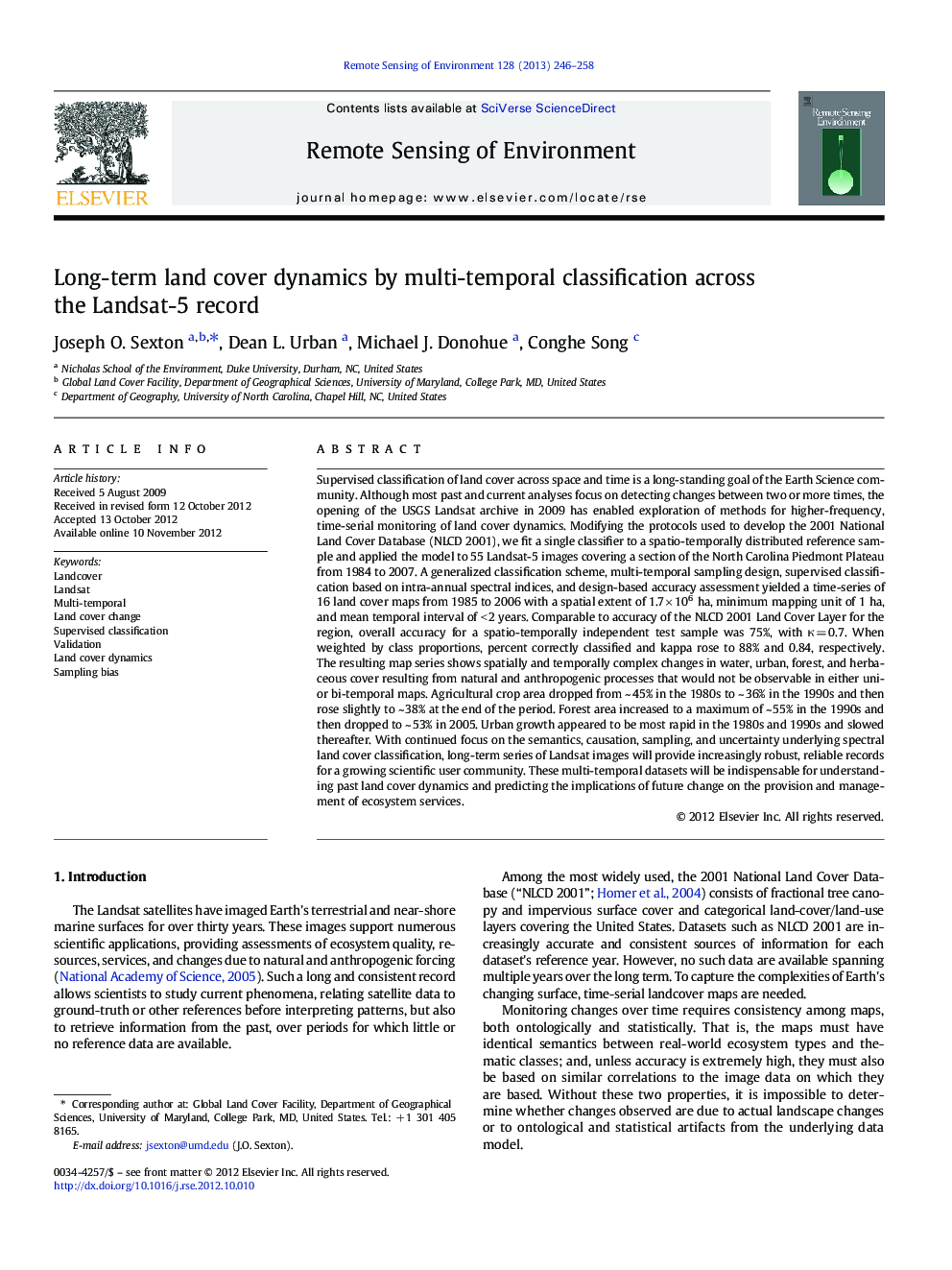| کد مقاله | کد نشریه | سال انتشار | مقاله انگلیسی | نسخه تمام متن |
|---|---|---|---|---|
| 4458973 | 1621272 | 2013 | 13 صفحه PDF | دانلود رایگان |

Supervised classification of land cover across space and time is a long-standing goal of the Earth Science community. Although most past and current analyses focus on detecting changes between two or more times, the opening of the USGS Landsat archive in 2009 has enabled exploration of methods for higher-frequency, time-serial monitoring of land cover dynamics. Modifying the protocols used to develop the 2001 National Land Cover Database (NLCD 2001), we fit a single classifier to a spatio-temporally distributed reference sample and applied the model to 55 Landsat-5 images covering a section of the North Carolina Piedmont Plateau from 1984 to 2007. A generalized classification scheme, multi-temporal sampling design, supervised classification based on intra-annual spectral indices, and design-based accuracy assessment yielded a time-series of 16 land cover maps from 1985 to 2006 with a spatial extent of 1.7 × 106 ha, minimum mapping unit of 1 ha, and mean temporal interval of < 2 years. Comparable to accuracy of the NLCD 2001 Land Cover Layer for the region, overall accuracy for a spatio-temporally independent test sample was 75%, with κ = 0.7. When weighted by class proportions, percent correctly classified and kappa rose to 88% and 0.84, respectively. The resulting map series shows spatially and temporally complex changes in water, urban, forest, and herbaceous cover resulting from natural and anthropogenic processes that would not be observable in either uni- or bi-temporal maps. Agricultural crop area dropped from ~ 45% in the 1980s to ~ 36% in the 1990s and then rose slightly to ~ 38% at the end of the period. Forest area increased to a maximum of ~ 55% in the 1990s and then dropped to ~ 53% in 2005. Urban growth appeared to be most rapid in the 1980s and 1990s and slowed thereafter. With continued focus on the semantics, causation, sampling, and uncertainty underlying spectral land cover classification, long-term series of Landsat images will provide increasingly robust, reliable records for a growing scientific user community. These multi-temporal datasets will be indispensable for understanding past land cover dynamics and predicting the implications of future change on the provision and management of ecosystem services.
► Long-term, time-serial land cover maps derived retrieved from the Landsat archive.
► Derivation of area-weighting correction for sampling bias in validation metrics.
► 75% correctly classified with 0.7 Kappa statistic before area-weighting.
► 88% correctly classified with 0.84 Kappa statistic after area-weighting.
► Time-serial monitoring resolves greater temporal complexity than change detection.
Journal: Remote Sensing of Environment - Volume 128, 21 January 2013, Pages 246–258